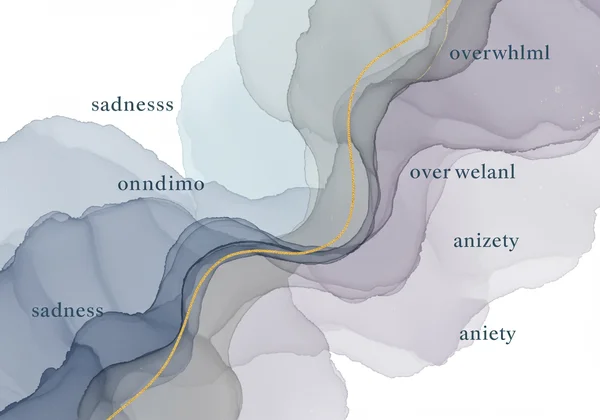EPDS Questionnaire: All 10 Questions Explained
The journey into pregnancy and new parenthood is full of powerful emotions. While there's immense joy, it's also completely normal to feel uncertain, anxious, or simply not like yourself. If you're considering a mental health screening like the Edinburgh Postnatal Depression Scale (EPDS), you're taking a brave and important step toward understanding your feelings. But what do the questions on the EPDS questionnaire actually mean?
We’ve broken down each question from the EPDS so you can understand exactly what it’s asking. Our goal is to make this process feel clear and supportive, right from the start. When you're ready, you can take the free screening on our secure platform.
What Is the EPDS Scale & How Is It Scored?
Before we dive into the questions, let's cover the basics. The Edinburgh Postnatal Depression Scale (EPDS) is a set of 10 questions developed by researchers (Cox, J.L., Holden, J.M., & Sagovsky, R. 1987) to help new and expectant mothers identify symptoms of perinatal depression and anxiety. It's a screening tool, not a diagnostic one, designed to be a starting point for a conversation with a healthcare professional.

Understanding the "In the Past 7 Days" Timeframe
You'll notice that each question asks you to reflect on how you have felt over the past 7 days. This specific timeframe is crucial. It's not asking about a single bad day or your entire life history. Instead, it focuses on your recent and persistent emotional state, which is the most accurate indicator of potential perinatal mood challenges. This ensures the results are relevant to your current well-being.
A Simple Guide to the 0-3 Point Scoring System
As you answer each question, you'll choose from four possible responses. These responses are assigned a point value from 0 to 3. A score of 0 typically represents the absence of a symptom, while a score of 3 indicates the symptom is present most of the time. At the end of the test, these points are added up for a total score out of 30. This score helps to quantify your risk level for perinatal depression.
A Deep Dive Into Each of the 10 EPDS Questionnaire Items
Now, let's explore the purpose behind each of the 10 questions on the EPDS form. Understanding what each question is trying to measure can help you answer more honestly and accurately.

Questions 1 & 2: Assessing Anhedonia (The Ability to Feel Joy)
These first two questions—"I have been able to laugh and see the funny side of things" and "I have looked forward with enjoyment to things"—are designed to measure something called anhedonia. This clinical term simply means the reduced ability to experience pleasure or joy from activities you once found enjoyable. It's a core symptom of depression, and these questions gently probe whether that spark of enjoyment has been dimming lately.
Question 3: Uncovering Self-Blame
"I have blamed myself unnecessarily when things went wrong." This question is a powerful indicator of the negative thought patterns associated with depression. New parenthood is filled with challenges, from a baby who won't sleep to feeding difficulties. This question helps differentiate between normal parental concerns and a persistent, unfair pattern of self-blame that can weigh heavily on your mental health.
Questions 4 & 5: Screening for Anxiety and Panic
"I have been an anxious or worried for no good reason" and "I have felt scared or panicky for no very good reason." Many people don't realize that the EPDS also screens for anxiety, which often co-occurs with depression. These questions identify feelings of generalized anxiety or sudden panic attacks that feel disconnected from any real threat. It acknowledges that perinatal distress isn't just about sadness; it can also be about overwhelming worry.
Question 6: Gauging Your Ability to Cope
"Things have been getting on top of me." This question assesses your perceived ability to cope with daily life. It’s a gentle way of asking if you feel overwhelmed or that you're barely treading water. Feeling this way is a significant sign that you may need more support, and it’s a very common experience for mothers facing perinatal mood disorders.
Questions 7-9: Exploring Sadness, Unhappiness, and Crying
These questions get to the heart of what most people associate with depression: "I have been so unhappy that I have had difficulty sleeping," "I have felt sad or miserable," and "I have been so unhappy that I have been crying." They measure the severity and impact of low moods. While "baby blues" can involve some tears, the EPDS helps determine if your sadness is persistent, disruptive to sleep, and coloring your overall experience.
Question 10: Safely Addressing Thoughts of Self-Harm
"The thought of harming myself has occurred to me." This is the most sensitive question on the scale, and it is here for one reason: your safety. It is a direct, non-judgmental way to screen for risk. Answering "yes" to this question does not mean you are a bad parent; it means you are in significant pain and need immediate support.
IMPORTANT: Your Safety Matters If you are having thoughts of harming yourself, please know that you are not alone and help is available. This is a medical emergency.
- Contact your local emergency services (e.g., 911 or 999) immediately.
- Go to the nearest hospital emergency room.
- Call or text a crisis hotline, such as the 988 Suicide & Crisis Lifeline in the US and Canada. Your well-being is the priority. Reaching out is a sign of strength.
What to Do After Answering the EPDS Questions
After you've completed the questionnaire, the next step is to understand what your results mean and what to do with them. When you use our free EPDS screening, you get an instant score and clear guidance.

Understanding Your Total EPDS Score Interpretation
Your total EPDS score provides an estimate of your risk for perinatal depression. Generally, a score above 10 or 12 suggests a possible risk and is a strong signal that you should speak with a healthcare provider. However, any score that feels concerning to you is worth discussing. Our online tool not only gives you a score but also offers an optional AI-powered analysis for a deeper, more personalized report on your emotional well-being.
The Importance of Professional Consultation
Remember, the EPDS is a screening tool, not a diagnosis. The single most important step after receiving your score is to share it with a trusted professional, such as your OB/GYN, a primary care physician, a midwife, or a mental health therapist. They can provide a formal evaluation, discuss your symptoms in context, and create a support plan tailored to your needs. Your EPDS score interpretation is the perfect starting point for that conversation.
Ready for Clarity? Take Your Free EPDS Screening Now
You've already taken an important step by learning more about the EPDS. This isn't just a test; it's a tool to help you put words to your feelings. You have the strength to understand your mental health, and we're here to provide a clear, private starting point.
Now, take the next step. Our free, confidential, and multi-language EPDS screening takes less than five minutes to complete. It’s a simple, private way to get the clarity you deserve. Start your screening now and get your instant results.
Frequently Asked Questions About the EPDS Test
What is a normal EPDS score?
While "normal" varies, a score below 10 is generally considered low risk for significant perinatal depression. Scores between 10 and 12 indicate a possible risk, and a score of 13 or higher suggests a high probability of depression. Regardless of the number, if you feel unwell, it’s crucial to seek professional advice.
Does the EPDS screen for anxiety?
Yes, it does. As noted above, questions 4 and 5 ("I have been anxious or worried..." and "I have felt scared or panicky...") are specifically included to screen for common symptoms of perinatal anxiety, which frequently accompanies depression.
How long does the free EPDS test take?
One of the best features of the EPDS is its brevity. Our EPDS test online is designed to be quick and easy, typically taking only 3 to 5 minutes to complete. This makes it a highly accessible first step for busy new parents seeking answers.